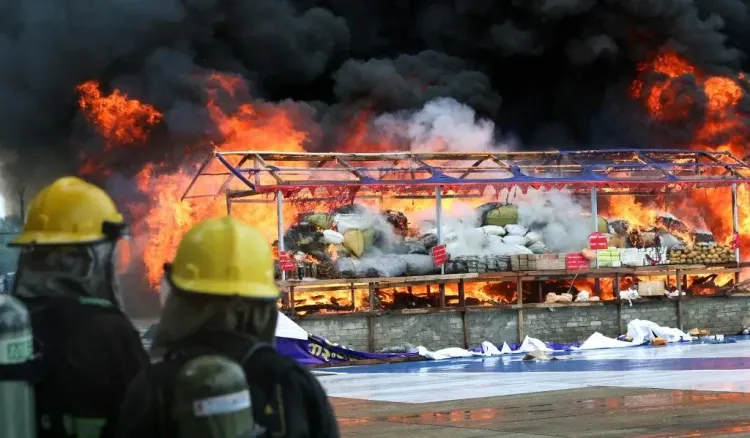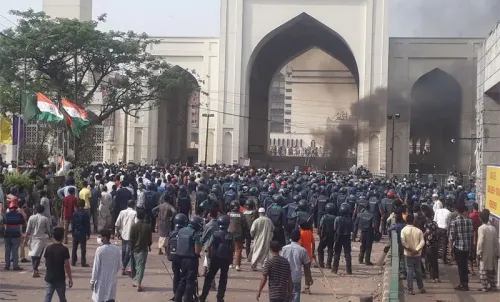What Led to the Seizure of Two Million Stimulant Tablets in Eastern Myanmar?

Synopsis
Key Takeaways
- Two million stimulant tablets seized in Shan state.
- Street value of 800 million kyats.
- Several arrests made related to the seizures.
- Recent trends show a rise in drug trafficking.
- Collaboration among law enforcement is essential.
Yangon, July 25 (NationPress) Authorities in Myanmar have confiscated two million stimulant tablets in the Shan state located in eastern Myanmar, as reported by the state-owned publication The Mirror on Friday.
Following a tip-off, anti-drug police conducted a search on a vehicle in the Mong Hsat township of Shan state on July 20, resulting in the confiscation of the narcotics and the arrest of two individuals.
The street value of the seized drugs amounts to 800 million kyats (approximately 0.38 million US dollars).
The arrested individuals are facing charges under relevant laws.
In a related case on July 23, Myanmar officials confiscated 67.33 kg of heroin in the Nay Pyi Taw Union Territory in central Myanmar, as stated by the Central Committee for Drug Abuse Control (CCDAC).
Anti-drug officers searched two vehicles in Lewe township after receiving a tip-off, leading to the seizure of the drugs and the arrest of two suspects. Another suspect related to this case was captured in Tachileik township of Shan state.
Moreover, on July 22, authorities in Myanmar seized 1,875 kg of methamphetamine (commonly known as Ice) and 1.6 million stimulant tablets in the Yangon region, according to the CCDAC.
Anti-narcotics officers raided a residence in Insein township, where they confiscated the drugs, leading to the arrest of nine individuals linked to the case across Yangon, Bago, and Mandalay.
Investigations revealed that the narcotics were intended for shipment to Malaysian waters.
Additionally, on July 17, authorities seized over 22 kg of 'happy water', a synthetic drug, along with various other illegal substances in the southern Mon state.
Based on another tip-off, anti-narcotics police searched a vehicle in Kyaikto township on July 8, seizing 19.5 kg of concentrated opium, 22.6 kg of 'happy water', 1.7 kg of ICE, 14 kg of Ketamine, and 36,000 stimulant tablets.
According to investigations, the seized drugs were being transported from Mongyai township in Shan state to Myawaddy township in Kayin state.










